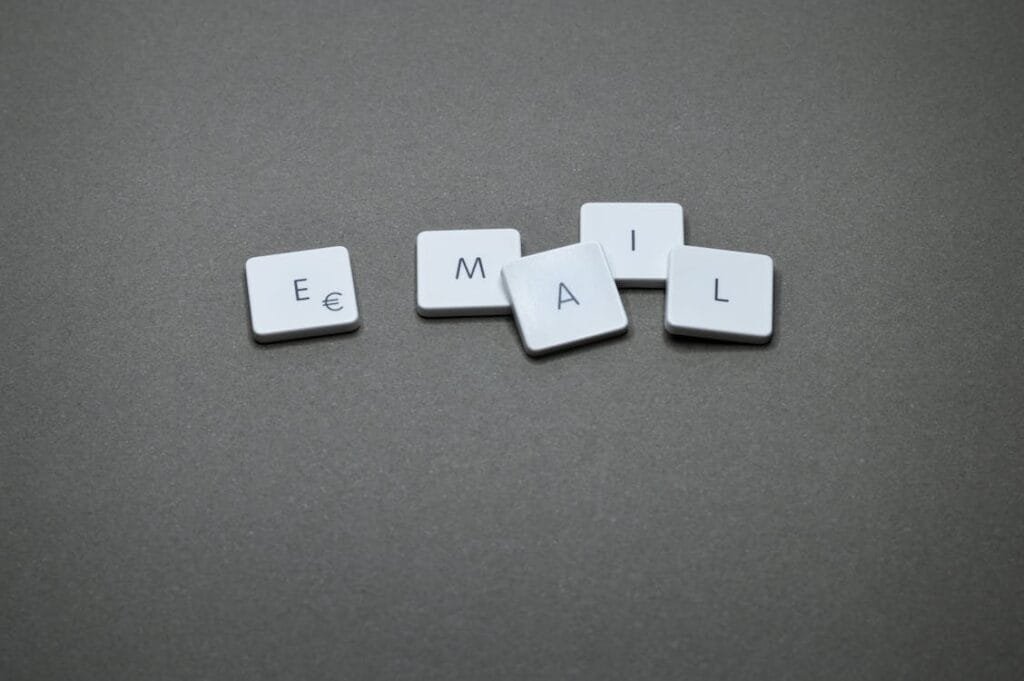In the ever-evolving world of email marketing, the tools you choose can be pivotal to your campaign’s success. Enter the ring, two formidable contenders for 2024: Mailchimp and Mailshake. Both have their unique strengths, but which one will give your email marketing the edge it needs? Let’s dive in and compare these two giants, focusing on one key area at a time. Our goal? To help you pick the champion that best aligns with your business needs.
Feature Comparison: Automation and Personalization
In today’s fast-paced digital world, automation isn’t just a luxury; it’s a necessity. It’s the secret sauce that can turn a good email campaign into a great one. But how do Mailchimp and Mailshake stack up in this critical area?
Mailchimp – The Automation Maestro
Mailchimp has long been revered as an automation powerhouse. It’s like having a digital marketing guru at your fingertips. With Mailchimp, you can automate various aspects of your email marketing, from basic autoresponders to complex, behavior-triggered sequences.
Picture this: A subscriber joins your list and immediately receives a warm welcome email. A few days later, they get a follow-up email tailored to their interests, all without you lifting a finger. That’s Mailchimp’s automation for you.
The platform’s real strength lies in its user-friendly interface. Even if you’re not a tech whiz, setting up sophisticated email sequences is straightforward. Plus, with its robust analytics, you can continually refine your approach, ensuring that your automation strategy evolves alongside your business.
Mailshake – The Personalization Prodigy
While Mailchimp focuses on broad automation, Mailshake takes a slightly different approach, emphasizing personalization. It understands that in the crowded space of email inboxes, personalized emails are the ones that stand out.
Mailshake allows you to craft highly customized emails that feel personal, even when sent to thousands. Imagine sending an email that addresses each recipient by name, references their specific interests, or even mentions their recent interactions with your business. That’s the level of personalization Mailshake offers.
What sets Mailshake apart is its ability to integrate personalization into various aspects of email outreach. Whether you’re running a cold email campaign, following up with leads, or nurturing existing customers, Mailshake ensures that each email feels tailor-made for the recipient.
Who Takes the Crown in Automation and Personalization?
In the battle between Mailchimp and Mailshake over automation and personalization, it’s a showdown of two powerful but distinct approaches. Let’s delve deeper into what sets them apart and who ultimately claims the crown in this critical arena of email marketing.
Mailchimp – The Automation Maestro
Mailchimp, often regarded as an automation maestro, offers a comprehensive suite of tools that cater to various automation needs. Its platform is designed to simplify complex email marketing tasks, making it accessible even to those who are new to the field. The strength of Mailchimp lies in its ability to effortlessly create automated email sequences that engage customers at different stages of their journey.
Imagine setting up a sequence where a new subscriber receives a welcome email, followed by a series of educational content, and finally, a promotional offer, all triggered by their actions. This level of automation sophistication is invaluable in building a relationship with your audience and guiding them through the sales funnel.
Moreover, Mailchimp’s user-friendly interface demystifies the process of setting up automated campaigns. Users can easily segment their audience, tailor their messaging, and schedule emails, ensuring that the right message reaches the right person at the right time. This blend of comprehensive automation tools and ease of use makes Mailchimp a top contender for businesses seeking an efficient and effective way to manage their email marketing.
Mailshake – The Personalization Prodigy
On the other side, Mailshake takes a different yet equally compelling approach, focusing on personalization. In today’s crowded inbox, personalized emails are the ones that capture attention and drive engagement. Mailshake understands this and provides tools that allow businesses to craft emails that feel individually tailored to each recipient.
Mailshake’s strength lies in its detailed personalization capabilities. Users can go beyond basic personalization, like adding a recipient’s name, to incorporating specific details about their interactions or behavior. This could mean referencing a recent download, a past purchase, or even an interaction on social media within the email content. Such a high degree of personalization makes each email feel like a one-on-one conversation, significantly increasing the chances of engagement and response.
For businesses whose strategies hinge on building strong, personal connections with their audience, especially in B2B contexts, Mailshake’s approach to personalization is a game-changer. It allows for the creation of highly targeted and relevant email campaigns that resonate on a personal level with each recipient.

Related: Check out our free SEO suite

User Interface and Ease of Use: Navigating the Tools
In the realm of email marketing tools, a user-friendly interface isn’t just a nice-to-have, it’s essential. It’s the difference between smoothly sailing through your campaigns and getting tangled in a web of confusion. Let’s see how Mailchimp and Mailshake fare in terms of usability.
Mailchimp – The King of User-Friendly Design
Mailchimp has long been acclaimed for its intuitive, user-friendly interface. It’s like having a friendly guide through the world of email marketing. Whether you’re a seasoned marketer or just starting, navigating through Mailchimp’s dashboard is a breeze.
With its clean layout, clear labeling, and helpful tips along the way, setting up campaigns, managing your email list, and analyzing results are straightforward. Even more complex features like segmentation and automation are made accessible, thanks to Mailchimp’s thoughtful design.
The platform also offers a range of pre-designed templates, making it easy to create beautiful, professional-looking emails without needing a background in design. This focus on ease of use makes Mailchimp an excellent choice for small businesses or solo entrepreneurs who need an effective, no-fuss email marketing solution.
Mailshake – Streamlined for Efficiency
Mailshake, while slightly more niche in its focus, also offers an intuitive user interface. It’s designed with efficiency in mind, particularly for sales professionals and marketers who rely on email outreach. The platform’s dashboard provides a clear overview of your campaigns, with easy access to key features like email sequences, templates, and performance tracking.
What sets Mailshake apart is its streamlined approach to campaign setup. The platform guides you through creating personalized email sequences, making it simple to target your messages effectively. For users who prioritize speed and efficiency in their email outreach, Mailshake’s interface is a solid choice.
Deciding on Ease of Use
When it comes to user interface and ease of use, both Mailchimp and Mailshake shine in their ways. If you’re looking for an all-in-one tool that balances functionality with an easy-to-navigate interface, Mailchimp is your best bet. Its combination of comprehensive features and user-friendly design makes it suitable for a wide range of users.
If your focus is more on sales and lead generation, and you value a streamlined, efficient setup for your email campaigns, Mailshake is the way to go. Its interface is tailored to make email outreach as efficient as possible, which is ideal for sales teams and marketers focused on outbound email strategies.
Pricing and Plans: Understanding Cost-Effectiveness
When selecting an email marketing tool, understanding the pricing and plans is crucial. It’s like picking a meal plan; you want the most nutritional value for your budget. Let’s compare how Mailchimp and Mailshake stack up in terms of affordability and value for money.
Mailchimp
- Free Plan: Available with basic features, suitable for up to 2,000 contacts and 10,000 sends per month with a daily limit of 2,000.
- Essentials Plan: Starting at around $9.99/month, this plan includes all email templates, A/B testing, custom branding, and support for up to 50,000 contacts.
- Standard Plan: Starting at approximately $14.99/month, this offers additional features like retargeting ads, advanced insights, and automation tools, catering to up to 100,000 contacts.
- Premium Plan: Starting from $299/month, aimed at larger businesses, offering advanced segmentation, multivariate testing, and unlimited seats and role-based access.
Mailshake
- Email Outreach Plan: Priced at $59/user/month when billed annually. Includes features like email personalization, lead catchers, and analytics.
- Sales Engagement Plan: Priced at $99/user/month when billed annually. Includes additional features like phone dialer, social selling, and Salesforce integration.
- Both plans offer features tailored for sales teams and agencies focusing on cold email outreach and sales engagement.
Mailchimp – Versatile Pricing for Various Needs
Mailchimp offers a range of pricing plans, making it accessible for businesses of all sizes. Starting with a free plan, which is great for beginners or small businesses, it provides essential features and allows you to send up to 10,000 emails per month to 2,000 contacts.
As your business grows, you can scale up to their paid plans, which unlock more advanced features like automated series, detailed analytics, and A/B testing. The pricing is based on the number of contacts, making it a scalable solution for growing businesses. This tiered pricing structure allows businesses to start small and expand as their needs grow, without a significant upfront investment.
Mailshake – Focused Plans for Targeted Outreach
Mailshake, in contrast, offers a more streamlined pricing structure, focused on its core offering of sales engagement and email outreach. Its plans are designed with sales teams and agencies in mind, offering features like email personalization, automated sequences, and integration with sales tools.
While Mailshake doesn’t offer a free plan, its starting plan is packed with functionalities tailored for effective sales outreach. The pricing is straightforward, based on the number of user accounts, making it a simple choice for teams focused on outbound email campaigns and lead generation.
Balancing Budget and Features
When it comes to pricing and plans, the choice between Mailchimp and Mailshake depends on your specific needs and budget constraints. If you’re looking for a flexible, scalable solution that grows with your business, Mailchimp is a compelling choice. Its range of plans caters to various business sizes, making it a versatile option for everything from small startups to larger enterprises.
On the other hand, if your primary focus is sales outreach and you need a tool specifically designed for this purpose, Mailshake’s pricing structure offers value for money. Its plans, while not as varied as Mailchimp’s, provide robust features for sales teams and agencies focusing on targeted email campaigns.
Integration Capabilities: Enhancing Efficiency and Functionality
In the digital marketing ecosystem, the ability to integrate with other tools and platforms is essential. It’s like having a team of experts working seamlessly together. Let’s examine how Mailchimp and Mailshake perform in terms of integration capabilities.
Mailchimp – A Hub of Diverse Integrations
Mailchimp stands tall as a champion of integrations, offering a wide array of options that connect with various platforms and services. This vast network of integrations is like a Swiss Army knife for digital marketing, equipping you with the tools to streamline your workflow and enhance your campaigns.
Whether you need to sync with CRM systems, e-commerce platforms, social media, or analytics tools, Mailchimp likely has an integration for it. This expansive range is particularly beneficial for businesses using a diverse set of tools and services. For instance, integrating with e-commerce platforms like Shopify or WooCommerce allows for seamless syncing of customer data and automated targeted campaigns.
Moreover, Mailchimp’s integrations are not just numerous; they are also user-friendly. This ease of integration makes it an excellent option for businesses of all sizes, particularly those without extensive technical resources.
Mailshake – Focused Integrations for Sales and Marketing
Mailshake may not boast the extensive array of integrations that Mailchimp offers, but it provides focused and highly effective integrations, particularly valuable for sales and marketing teams. These integrations are like specialized tools, crafted to enhance specific aspects of your sales and outreach efforts.
Key integrations include CRM systems, which are crucial for sales teams to track interactions and follow-ups. By integrating with popular CRM platforms, Mailshake ensures that your sales team can work efficiently, with all relevant data at their fingertips. Additionally, integrations with LinkedIn and other social media platforms allow for a multi-channel approach to sales and marketing, essential in today’s digital landscape.
Making the Right Choice for Integration Needs
In choosing between Mailchimp and Mailshake for integration capabilities, consider the nature of your business and your specific needs. If your business requires a wide range of integrations across various platforms and services, Mailchimp is the clear choice. Its extensive list of integrations and user-friendly approach make it suitable for a broad range of business types and sizes.
However, if your focus is on sales and lead generation, and you need a tool that provides deep, effective integrations specifically for these purposes, Mailshake is a strong contender. Its targeted integrations are designed to enhance the efficiency and effectiveness of sales and marketing campaigns.
Conclusion
As we conclude our comprehensive exploration of Mailchimp and Mailshake, it’s evident that both platforms offer distinctive strengths, catering to diverse email marketing needs. The decision between the two isn’t about finding the universally ‘best’ tool but rather identifying which tool aligns perfectly with your specific marketing goals and operational requirements.
Mailchimp emerges as a versatile and user-friendly option, ideal for a wide range of businesses. Its strengths lie in its robust automation capabilities, user-friendly interface, and a diverse range of integrations. Mailchimp is particularly well-suited for small to medium-sized businesses or those just beginning their email marketing journey. Its scalable pricing plans also make it an attractive option for growing businesses.
Mailshake, on the other hand, shines with its focus on personalization and targeted email outreach. It is a powerful choice for sales-focused teams and businesses that prioritize personalized, one-on-one communication with their audience. While it may not offer the broad range of integrations as Mailchimp, its targeted approach is highly effective for specific sales and marketing strategies.
Read Next
- How mogul club Can Boost their Website Traffic to 100k in 6 Months! (Our Take!)
- How PhaseV Can Boost their Website Traffic to 100k in 6 Months! (Our Take!)
- How OMNIQ Can Boost their Website Traffic to 100k in 6 Months! (Our Take!)
- How Bezi Can Boost their Website Traffic to 100k in 6 Months! (Our Take!)
- How NuZee Can Boost their Website Traffic to 100k in 6 Months! (Our Take!)






















Comments are closed.